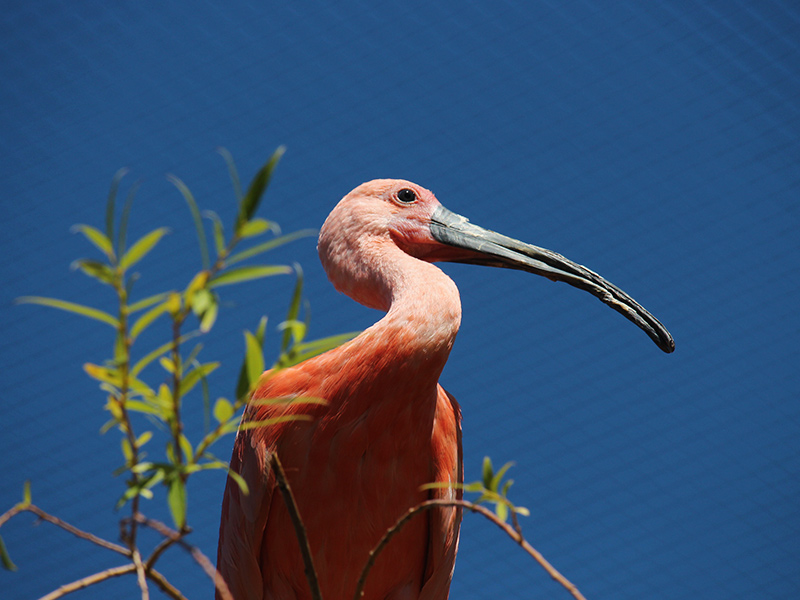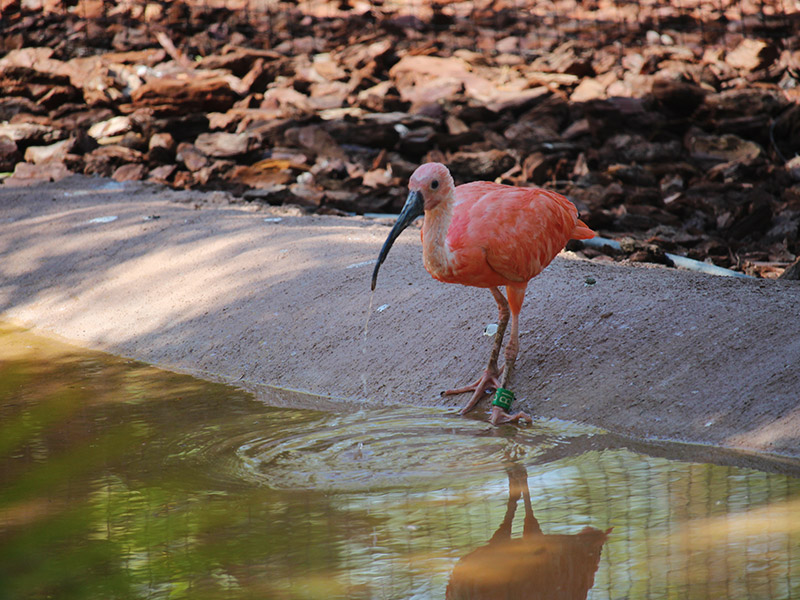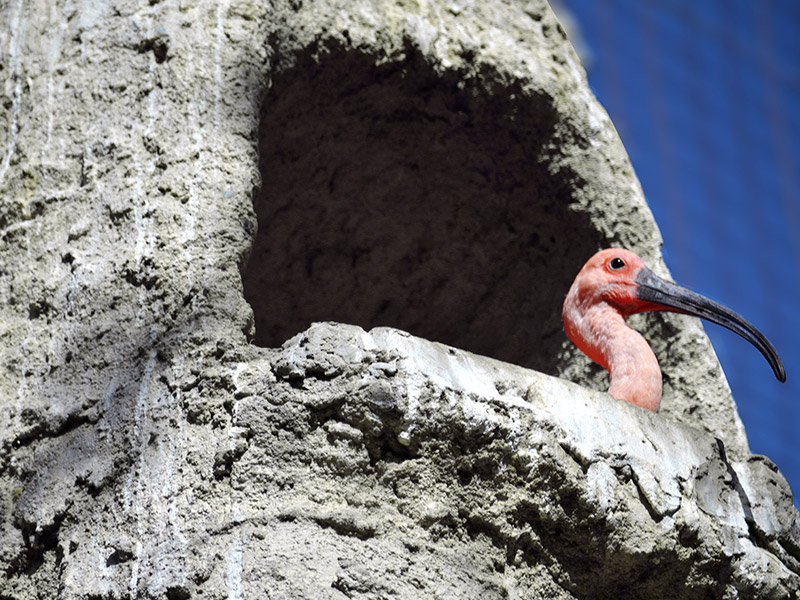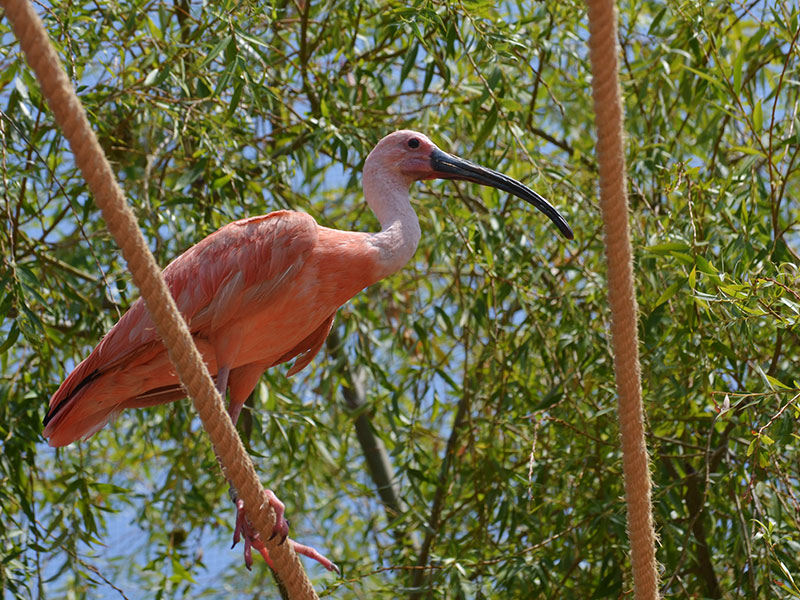It is found in northern South America, from Venezuela to eastern Brazil.
The bird's characteristic bright red plumage intensifies as it grows, while young birds begin a dark greyish-brown colour with a belly that is initially dark brown, then white. Its colour comes from pigments in the crustaceans it feeds on.
It is a very social species that lives in flocks of thirty or more individuals.
Breeding pairs build their nests, consisting of simple platforms made of sticks, close to other pairs in the same tree, probably to reduce the risks from predators. Clutches consist of 3-5 eggs and incubation lasts between 19 and 23 days. Both adult birds share responsibility for caring for the young.
There are many threats that impact the Scarlet Ibis' status, including overhunting, egg collection and sale of young as pets in open markets, loss of habitat, destruction of nesting ground and loss of foraging and feeding grounds along with heavy pollution in these areas.






















